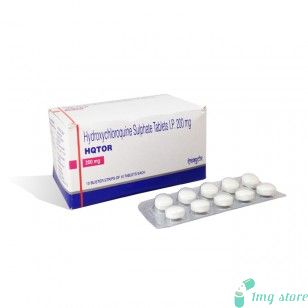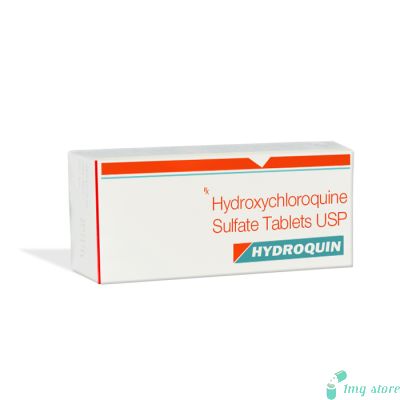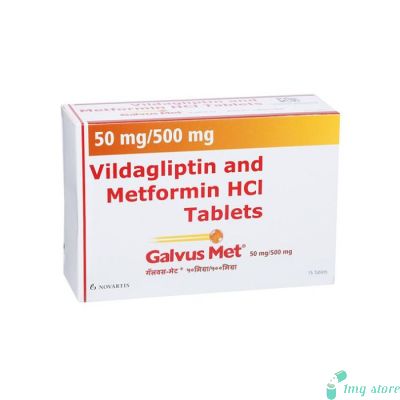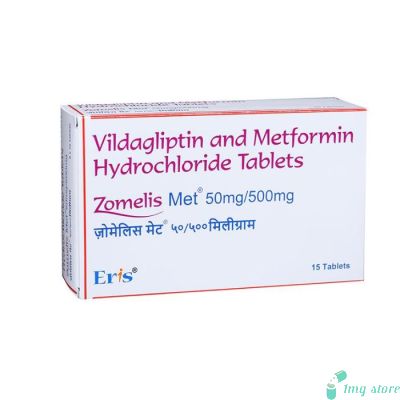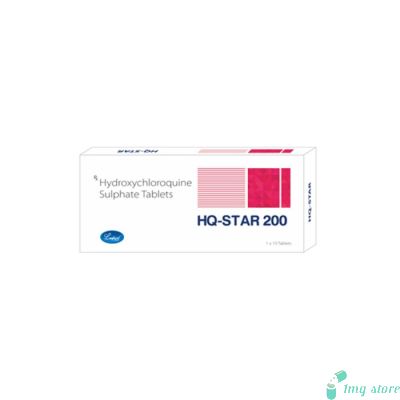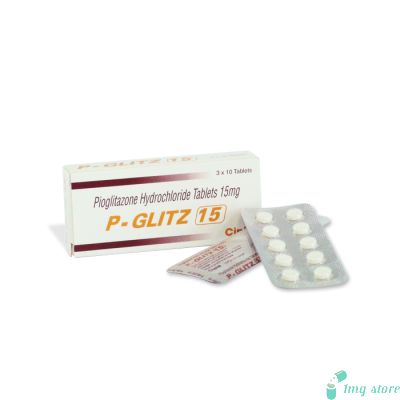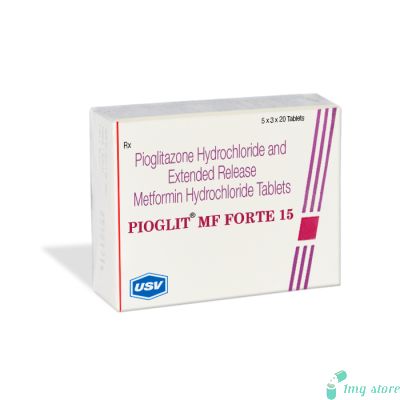Glinate Tablet (Nateglinide)
Glinate Tablet (Nateglinide) is a medication prescribed for adults with type 2 diabetes mellitus to help lower their blood sugar levels. It is commonly used in conjunction with other diabetes medicines to achieve optimal control of blood sugar. By regulating blood sugar levels, Glinate Tablet helps prevent potential complications of diabetes such as kidney damage and blindness.
Glinate Tablet (Nateglinide) - Effective For Type 2 diabetes
Glinate tablet, also known as Nateglinide, is an oral medication used to control blood sugar levels in individuals with type 2 diabetes. It belongs to the class of drugs known as meglitinides, which work by stimulating the release of insulin from the pancreas.
Nateglinide is prescribed for people with type 2 diabetes who experience high blood sugar levels after meals. It helps to lower post-meal glucose spikes by promoting the release of insulin, which aids in the uptake and utilization of glucose by the body's cells. It is also sold under the brand name Starlix.
Nateglinide works by stimulating the beta cells in the pancreas to release insulin, which helps to lower blood glucose levels. Glinate tablet has a rapid onset of action, with their effects being seen within 20 minutes of ingestion. It also has a relatively short duration of action, typically lasting around 4 hours.
The dosage of a Glinate tablet may vary depending on the individual's needs and response to the medication. It is important to follow the prescribed dosage and administration instructions provided by your healthcare provider. Glinate tablets can be used as a standalone medication to control blood sugar levels, or they may be prescribed in combination with other diabetes medications, such as metformin or insulin, for enhanced glycemic control. Regular monitoring of blood sugar levels is necessary while taking Glinate tablets to ensure optimal diabetes management. This helps determine the effectiveness of the medication and allows adjustments to be made if needed. The doses should be taken as per instructed by your physician or healthcare provider. If you miss the dose then take it as soon as you remember, however, if it is time for the net dose then skip the missed dose and continue with your prescription. It should be swallowed whole and not crushed, chewed, or broken. If a patient is unable to swallow it, it can be dissolved in water or apple juice.
It is important to note that this is a general overview of the Glinate tablet (Nateglinide). Always consult with your healthcare provider or pharmacist for specific information, dosage instructions, and any concerns related to your individual circumstances.
Nateglinide, also known as Glinate, offers several benefits when used in the management of type 2 diabetes.
Blood Sugar Control: Nateglinide helps control blood sugar levels in people with Type 2 Diabetes by stimulating the release of insulin from the pancreas. This action helps to lower elevated blood glucose levels, especially after meals, and promotes better glycemic control.
Rapid Onset of Action: Nateglinide has a fast onset of action, with its effects seen within 20 minutes of ingestion. This rapid response makes it particularly useful for individuals who experience significant post-meal glucose spikes.
Flexibility in Meal Timing: Unlike some other diabetes medications, Nateglinide does not have to be taken with meals. This flexibility allows individuals to adjust their meal timings without compromising the effectiveness of the medication.
Lower Risk of Hypoglycemia: Nateglinide has a lower risk of causing hypoglycemia (low blood sugar) compared to certain other diabetes medications. It primarily stimulates insulin release in response to elevated blood glucose levels, reducing the likelihood of excessively low blood sugar levels.
Potential Weight Loss: Some individuals may experience weight loss or weight maintenance while taking Nateglinide. This can be beneficial for individuals with type 2 diabetes who are overweight or obese, as weight management is an important aspect of diabetes care.
Combination Therapy: Nateglinide can be used in combination with other Diabetes medications, such as metformin or insulin, to achieve better glycemic control. Combining medications with different mechanisms of action can help address multiple aspects of diabetes management.
Improved Quality of Life: By effectively controlling blood sugar levels, Nateglinide can contribute to an improved quality of life for individuals with type 2 diabetes. Stable blood sugar levels can reduce symptoms associated with high blood sugar, such as excessive thirst, frequent urination, and fatigue.
It is important to note that the benefits of Nateglinide can vary from person to person. The medication's effectiveness and suitability depend on individual factors and should be discussed with a healthcare provider. They can provide personalized guidance and determine the most appropriate treatment plan for managing type 2 diabetes.
When using a Glinate tablet (Nateglinide), there are certain precautions to keep in mind:
Follow Prescribed Dosage: Take the Glinate tablet exactly as prescribed by your healthcare provider. Do not exceed the recommended dosage or change the dosing schedule without consulting your doctor.
Timing of Administration: Nateglinide 120 mg is ordinarily taken before feasts to control post-dinner glucose spikes. It is critical to adhere to the endorsed timing directions given by your medical care supplier to guarantee ideal adequacy.
Hypoglycemia Risk: Starlix tablets may lower blood sugar levels, which can lead to hypoglycemia (low blood sugar). It is essential to monitor your blood sugar regularly and be aware of the symptoms of hypoglycemia, such as dizziness, shakiness, sweating, and confusion. If you experience these symptoms, promptly treat hypoglycemia by consuming a fast-acting source of glucose, such as fruit juice or glucose tablets, as advised by your healthcare provider.
Pre-existing Medical Conditions: Inform your healthcare provider about any pre-existing medical conditions you have, especially if you have liver or kidney problems. Nateglinide is metabolized in the liver and eliminated through the kidneys, so caution may be needed in such cases.
Allergies: If you have a known allergy or hypersensitivity to Nateglinide or any of its components, do not take a Glinate tablet. Inform your healthcare provider about any allergies you have before starting this medication.
Pregnancy and Breastfeeding: If you are pregnant, planning to become pregnant, or breastfeeding, discuss the potential risks and benefits of using the Glinate tablet with your healthcare provider. They will assess whether the medication is suitable for you during these stages.
Regular Monitoring: Regularly monitor your blood sugar levels as advised by your healthcare provider. This will help determine the effectiveness of the Glinate tablet and assist in making any necessary adjustments to your treatment plan.
Major Utilization of Nateglinide Medication
Blood Sugar Control: Starlix is used to help control blood sugar levels in individuals with type 2 diabetes. It is particularly effective in managing post-meal glucose spikes by stimulating the release of insulin from the pancreas. By regulating blood sugar levels, Nateglinide helps prevent complications associated with high blood sugar.
Type 2 Diabetes Management: Nateglinide medication is prescribed as an adjunct to diet and exercise for individuals with type 2 diabetes. It is many times suggested when the way of life changes alone are lacking in accomplishing objective glucose levels. Nateglinide can be utilized as a monotherapy or in blended with other diabetes prescriptions, like metformin or insulin, to improve glycemic control.
Mealtime Glucose Control: Nateglinide is particularly useful for individuals who experience elevated blood sugar levels after meals. By stimulating insulin release in response to the intake of food, Nateglinide helps reduce the surge in glucose levels that occurs after eating, leading to better overall glucose control throughout the day.
Individualized Treatment: Nateglinide offers a flexible treatment option that can be tailored to an individual's meal patterns and lifestyle. It does not have to be taken with meals, allowing for greater flexibility in meal timings and dose administration.
Here are some common side effects associated with Nateglinide:
Hypoglycemia: One of the most common side effects of Nateglinide is hypoglycemia, which occurs when blood sugar levels drop too low. Symptoms of hypoglycemia include dizziness, shakiness, sweating, confusion, and hunger. It is important to monitor blood sugar levels regularly, especially when starting Nateglinide or if the dosage is adjusted, to help prevent and manage hypoglycemia.
Headache: Some individuals may experience headaches while taking Nateglinide. If the headaches are persistent or severe, it is recommended to consult with a healthcare provider for further evaluation and guidance.
Gastrointestinal Issues: Nateglinide can sometimes cause gastrointestinal discomfort, including nausea, abdominal pain, diarrhea, or constipation. These symptoms are usually mild and temporary. If gastrointestinal issues persist or worsen, it is advisable to inform your healthcare provider.
Weight Gain: While weight gain is not a common side effect of Nateglinide, some individuals may experience slight weight gain. Maintaining a healthy diet and engaging in regular physical activity can help manage weight while taking this medication.
Allergic Reactions: In rare cases, Nateglinide may trigger an allergic reaction. Allergic symptoms may include rash, itching, swelling (particularly of the face, tongue, or throat), severe dizziness, or difficulty breathing. Seek immediate medical attention if you experience any signs of an allergic reaction.
Q: What should I do if I miss a dose of Glinate tablet?
A: If you miss a dose, take it as soon as you remember. However, if it is close to the time for your next scheduled dose, skip the missed dose and continue with your regular dosing schedule. Do not double the dose to make up for a missed one.
Q: Might Nateglinide tablets at any point cause weight gain?
A: Weight gain is certainly not a typical result of Nateglinide tablets. Now and again, people might encounter weight reduction or weight support while taking this prescription.
Q: Can I take a Glinate tablet if I have kidney or liver problems?
A: If you have kidney or liver problems, caution may be needed while taking the Glinate tablet. It is important to inform your healthcare provider about any pre-existing medical conditions, including kidney or liver issues, before starting the medication.
Q: Can Glinate tablets be taken with other diabetes medications?
A: Glinate tablets can be taken as a standalone medication or in combination with other diabetes medications, such as metformin or insulin. Combining medications with different mechanisms of action can help achieve better glycemic control.
Here are some common drug interconnections with Nateglinide:
Beta-Blockers: Beta-blockers, commonly used to treat high blood pressure and certain heart conditions, may mask the symptoms of hypoglycemia (low blood sugar). This can make it difficult to recognize and treat low blood sugar levels while taking Glinate tablets.
Sulfonylureas: Taking a Glinate tablet in combination with sulfonylureas, another type of medication used to control blood sugar, may increase the risk of hypoglycemia. Close monitoring of blood sugar levels is important if these medications are used together.
Meglitinides: Mixing a Starlix tablet with other meglitinide drugs, for example, repaglinide, can expand the risk of hypoglycemia. The utilization of different meglitinides together is by and large not suggested.
Beta-2 Agonists: Some medications used for respiratory conditions, such as salbutamol, may increase blood sugar levels. Combining Glinate tablets with beta-2 agonists may counteract the glucose-lowering effects of Glinate tablets and require adjustments to the dosage or timing of administration.
Ketoconazole: Ketoconazole, an antifungal medication, can increase the concentration of Nateglinide in the body, potentially leading to a higher risk of hypoglycemia. Close monitoring of blood sugar levels and adjustment of the Glinate tablet dosage may be necessary if these medications are used together.
Rifampin: Rifampin, an antibiotic used to treat certain infections, may decrease the concentration of Nateglinide in the body, reducing its effectiveness. Your healthcare provider may need to adjust the dosage of the Glinate tablet if you are prescribed rifampin.
| Manufacturer | : | Glenmark Pharma, India |
| Equivalent Brand | : | Starlix |
| Generic Search | : | Nateglinide |







